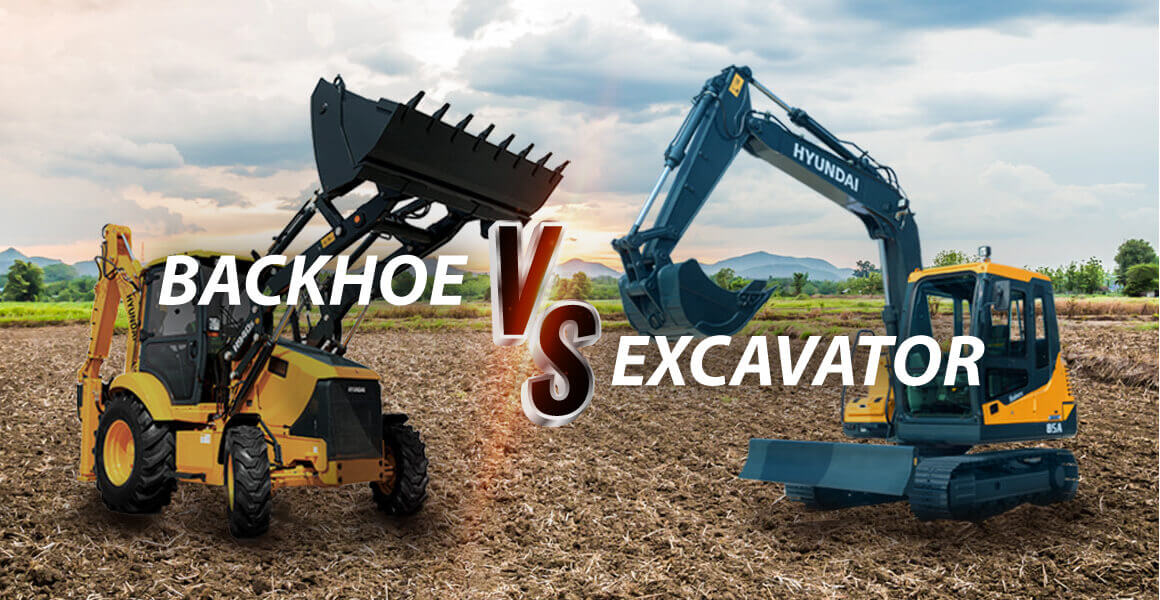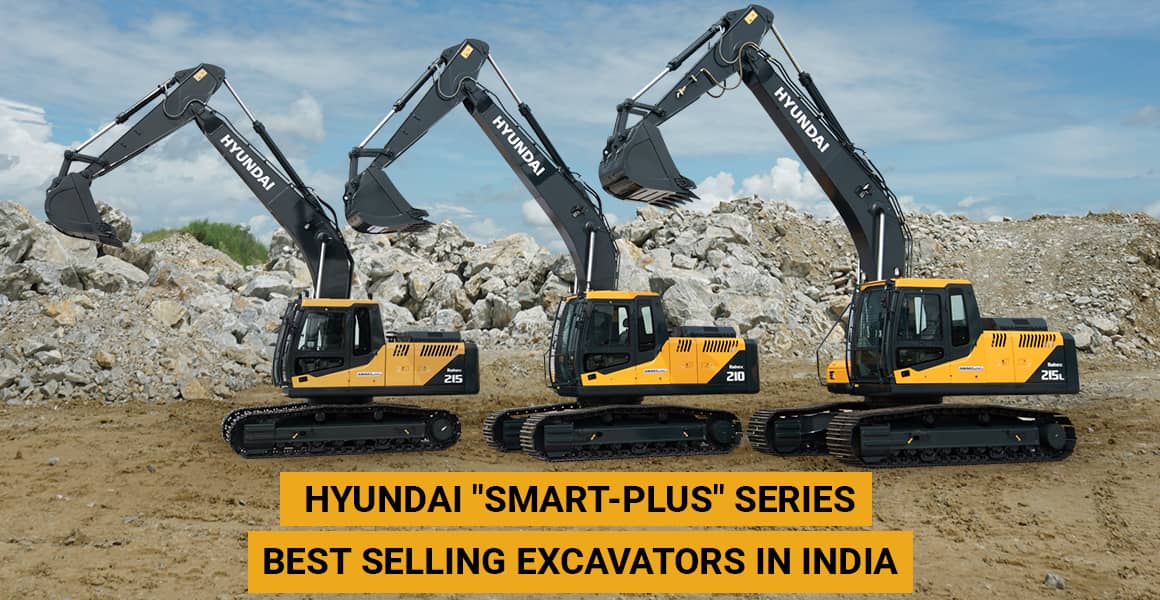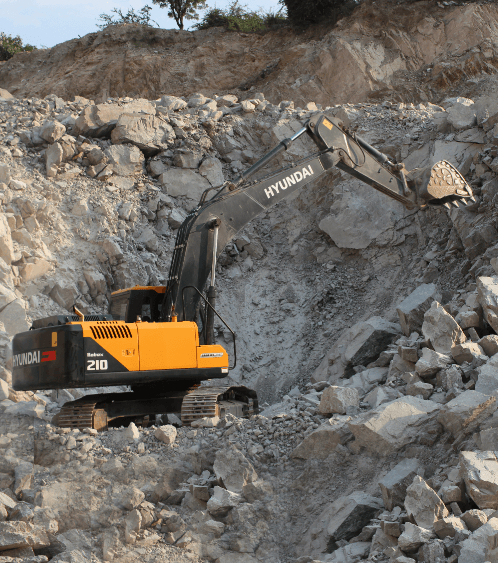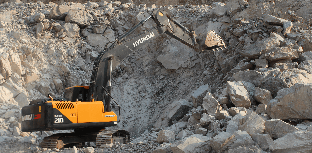Excavators are among the heaviest and most powerful construction or mining machinery on-site. These versatile machines come in various types, each designed to handle specific applications on different site conditions. However, transporting excavators between sites can be a complex process that requires careful planning and attention. To ensure that your excavator is transported safely and efficiently, it's essential to check a few key points before attempting it to load onto a truck or trailer.
This blog will take a closer look at the different types of excavators, and provide a comprehensive checklist to help you prepare your machine for transportation. Also, this blog will give you all Safety Guidelines to transport your excavator safely and securely. But before going in that direction, let’s understand a little more about types of excavators.
Types of Excavators
Crawler Excavators
Crawler excavators are heavy-duty machines that are typically larger in size and weight. They are usually used for heavy construction and mining projects and weigh anywhere from 8 ton to over 120 ton. They are known for their stability and ability to operate in rough terrain.
Long-Reach Excavators
Long-reach excavators are a specialized type of excavator with a longer boom and arm, which allows them to reach deeper and farther than a standard excavator. This special function makes them ideal for digging deep trenches, foundations, and other deep excavations. They can weigh anywhere from 22,000 to over 45,000 kgs.
Mini Excavators
Mini excavators are smaller and more compact than standard excavators. They typically weigh between 0.6~ 5.5 ton and are designed for small-scale construction projects, such as digging small trenches, foundations, and landscaping. They are also helpful in tight spaces where larger excavators cannot operate.
Tips to Follow Before Transporting an Excavator
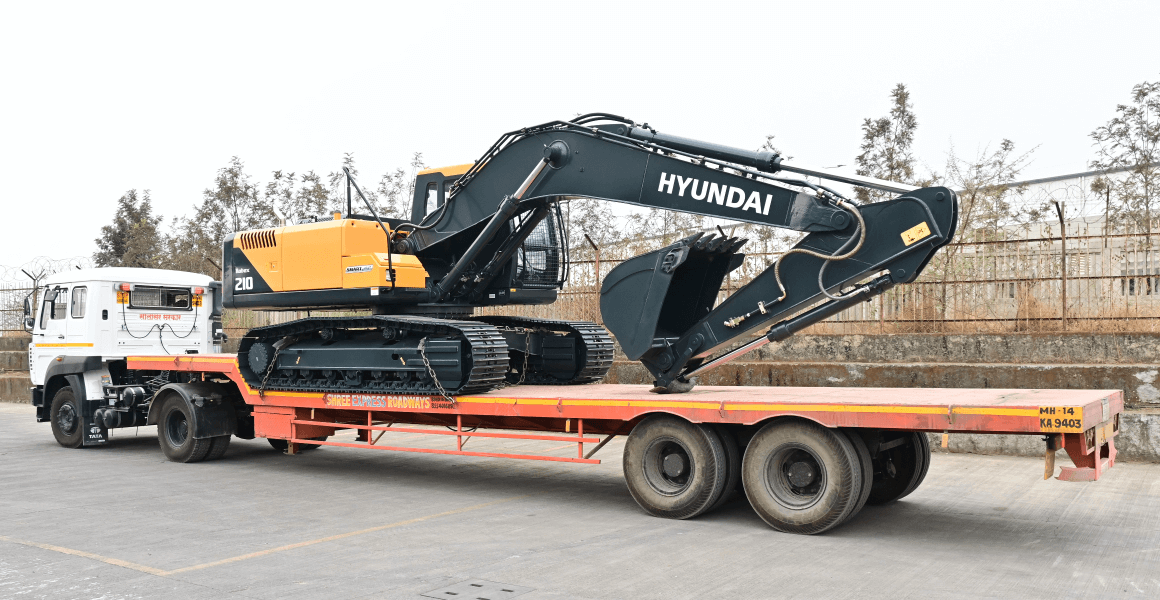
Risk Assessment: Before excavator transportation, conduct an overall risk assessment to identify potential hazards and risks, such as the weight and size of machines, road and weather conditions, routes, and low clearance areas to ensure equipment and personnel safety.
Protective Equipment: Protective equipment such as hard hats, safety glasses, gloves, and high visibility clothing should be worn by all individuals involved while transporting excavators.
Excavator Weight and Dimensions: Accurately determining the weight and dimensions is crucial for the transport process. It helps to ensure the proper size and weight of a vehicle. It also identifies any areas with low clearance or weight restrictions on the route.
Truck and Trailer Inspection: Before transporting the excavator, inspect the truck and trailer to ensure they are in good working condition. This inspection includes checking brakes, lights, tires, and engine parts.
Transit Insurance: Before transporting an excavator, have transit insurance in place to protect the equipment from potential damage or loss during transport. It can include coverage for collision, theft, and other types of damage.
Road Safety Regulations: Consider road safety regulations before transporting an excavator. The rules include compliance with local and state laws and regulations related to oversize loads and weight limits.
Weight Carrying Capacity of Trailer & Excavator: To ensure safe transport, match the weight-carrying capacity of the trailer with the weight of the excavator.
Ramp for Safe Loading on Trucks: Have a suitable ramp or loading dock in place to ensure safe loading. It will help prevent equipment damage and injuries to those involved in the transport process.
Safe Tying of Machine on Trailer: Once the excavator is loaded onto the trailer, ensure that it is safely tied down using straps, chains, or other securing devices. Safe tying will prevent the equipment from moving or shifting during transport and consequential transit damages.
Upper Height Limit Check: Before starting the transport of the excavator, check the upper height limit of the machine on the road to avoid any damage to the equipment.
Proper Positioning of the Machine: Before transporting the excavator, position the machine to prevent any damage. It can include removing or securing attachments and ensuring that the excavator is properly balanced on the trailer.
Excavator Loading and Unloading Tips
Before loading an excavator, it is important to:
- Designate specific duties for each member of the loading team
- Be aware of all obstacles in the area
- Check that the truck is parked and secure
- Check the trailer deck for any damage or debris
- Secure the excavator load for transport using straps or chains
Before unloading an excavator, it is important to:
- Position the truck or trailer in a safe and secure location
- Check the trailer deck or truck bed for any damage or debris
- Secure the excavator to prevent movement during unloading, using straps or chains
- Use proper equipment, such as a ramp or crane, to unload the excavator safely
- Inspect the excavator for any damage or issues
Conclusion
Hiring a professional excavator transport company is crucial to ensure the safe and accident-free transport of a heavy machine.
Consider HD construction equipment's (HCE) products if you are looking for a Reliable &
High Performance Excavator with low maintenance. They are known for their high fuel
efficiency and maximum output on-site. Hyundai also has a widespread service network,
making access to after-sales support easy.
The company offers sturdy and high-quality hydraulic excavators and excavator machinery. To know more, visit your nearest HCE dealership.
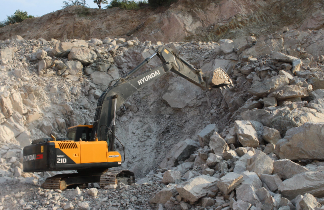
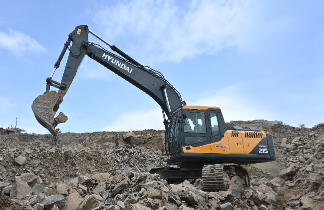
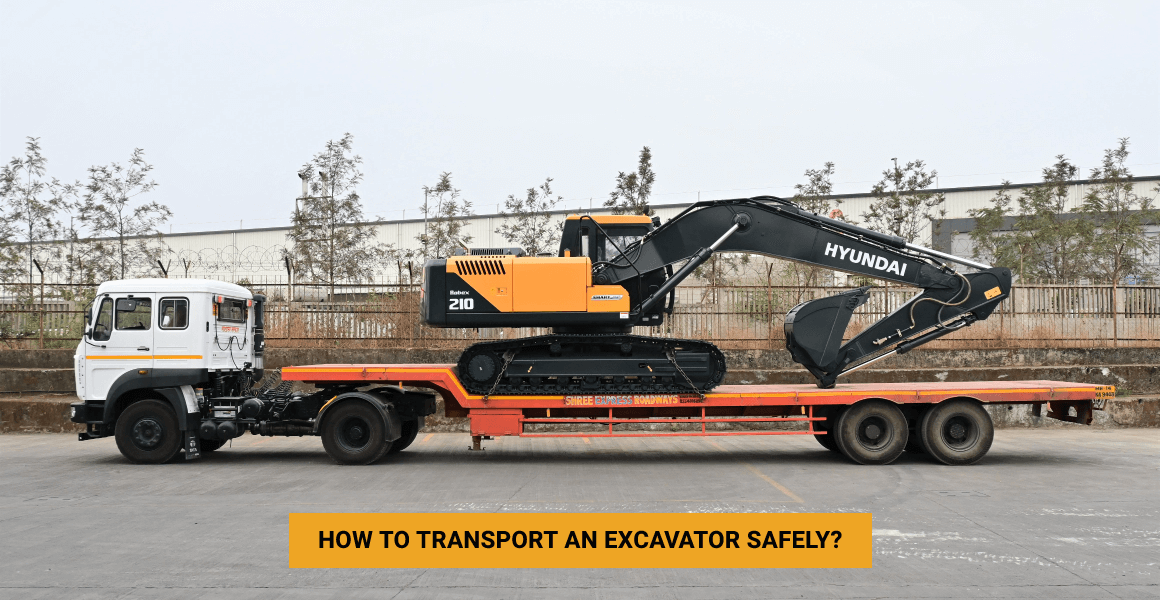
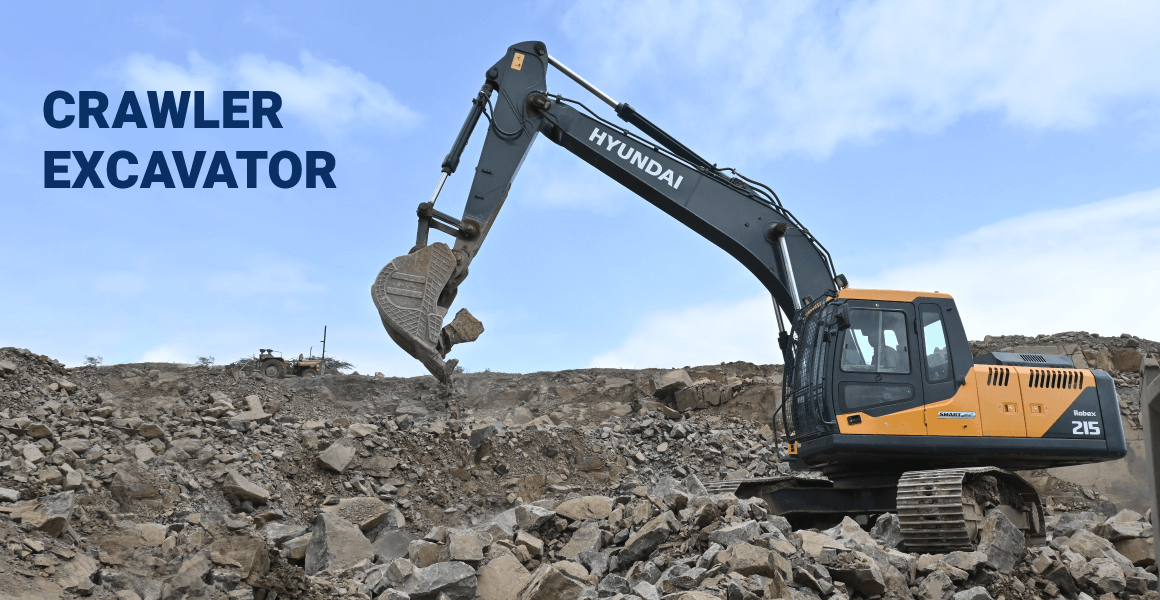
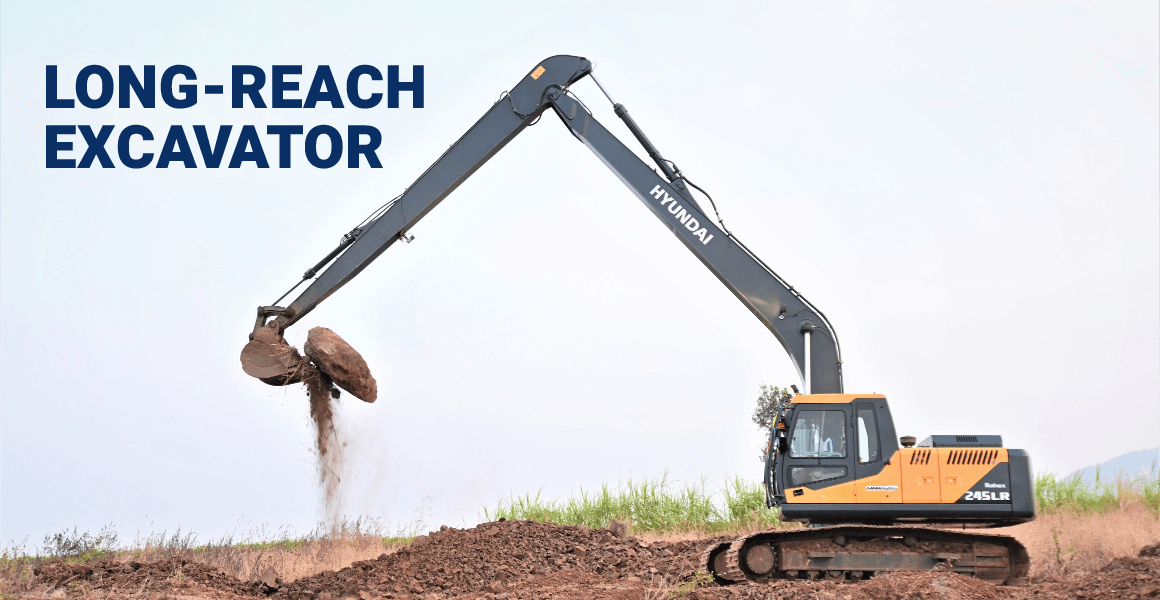
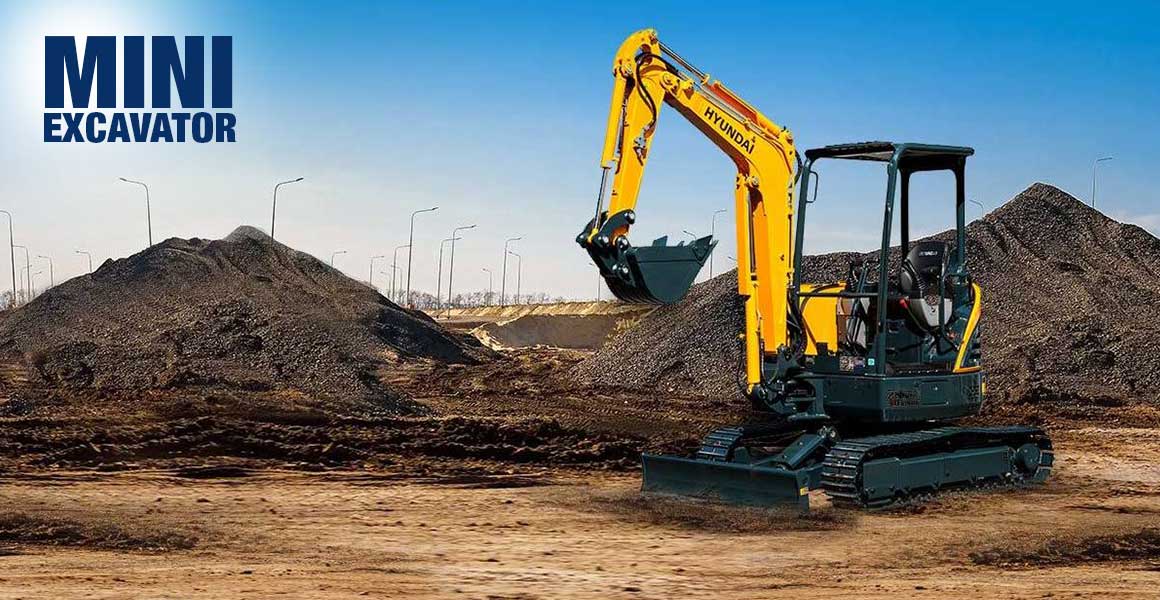
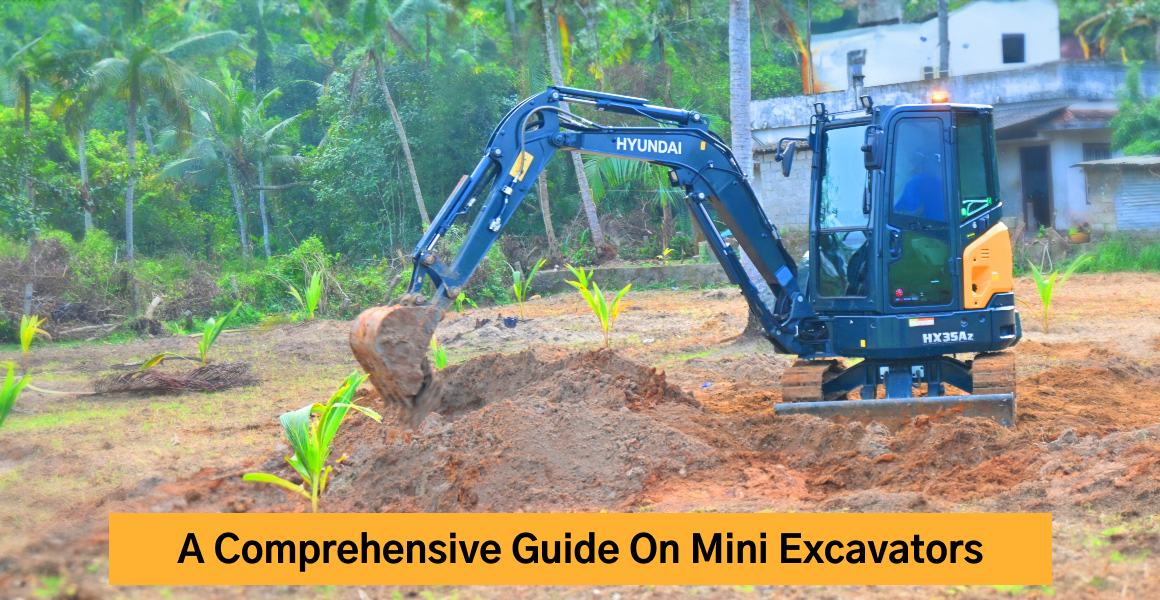

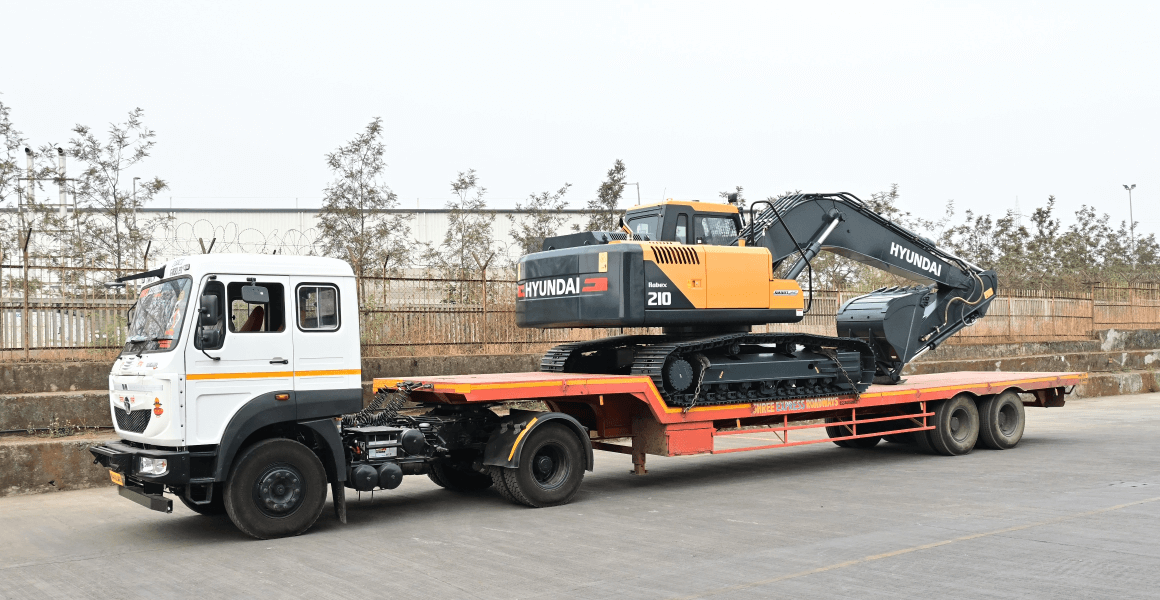


![8 Types Of Heavy Earth Moving Equipment Updated [2024]](/assets/blog_10_banner_new_2-2bb3d89f22b078fb71883400ec7207b413a099651af8bd4bd0572b0d38ffc5b3.png)
